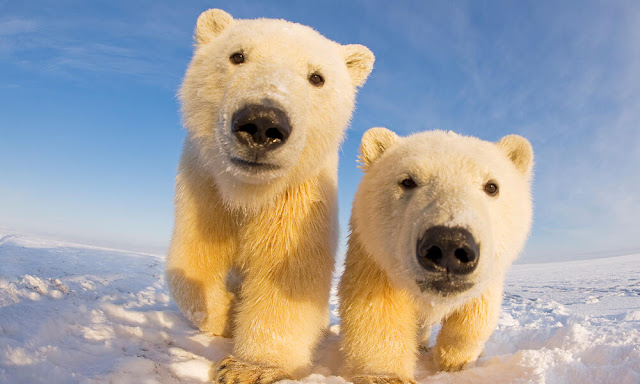 |
| Polar bear cubs at risk from climate change |
"Climate change poses a fundamental threat to the places, species and people’s livelihoods WWF works to protect. To adequately address this crisis we must urgently reduce carbon pollution and prepare for the consequences of global warming, which we are already experiencing. WWF works to:
- advance policies to fight climate change
- engage with businesses to reduce carbon emissions
- help people and nature adapt to a changing climate"
"Humans and wild animals face new challenges for survival because
of climate change. More frequent and intense drought, storms, heat
waves, rising sea levels, melting glaciers and warming oceans can
directly harm animals, destroy the places they live, and wreak havoc on
people’s livelihoods and communities."
Related: Brazil slashes budget to fight climate change as deforestation spikes: Reuters
 |
Polar bears, climate crisis, and oil and gas drilling in the Arctic National Wildlife Refuge |
"To adequately address the climate crisis we must urgently reduce
carbon pollution and prepare for the consequences of global warming,
which the world is already experiencing. Combining global outreach with
local expertise, WWF:
- helps people and nature adapt to a changing climate
- advances policies to fight climate change
- combats deforestation
- engages with businesses to reduce carbon emissions
- challenges U.S. cities to prepare for more extreme weather"
"Adapting to Climate Change
To avoid the worst effects of climate change, we need
to dramatically reduce global carbon emissions. But we must also prepare
for the significant and unavoidable consequences of carbon
emissions
such as increasing temperatures, shifting precipitaton patterns, ocean
acidification, sea level rise and the increasing intensity and frequency
of extreme weather events. WWF works with local communities,
governments and others around the world to help nature and people
prepare for the many impacts of a changing climate. To do this we:
 |
| polar bear cubs |
- Increase resilience of communities in Nepal by promoting new farming techniques, community weather monitoring and creating seed banks
- Restore beach vegetation to shade marine turtle nests in the Caribbean
- Secure access to fresh water for elephants in Thailand during periods of drought
- Identify areas where polar bears can live on solid Arctic sea ice for decades to come"
No comments:
Post a Comment